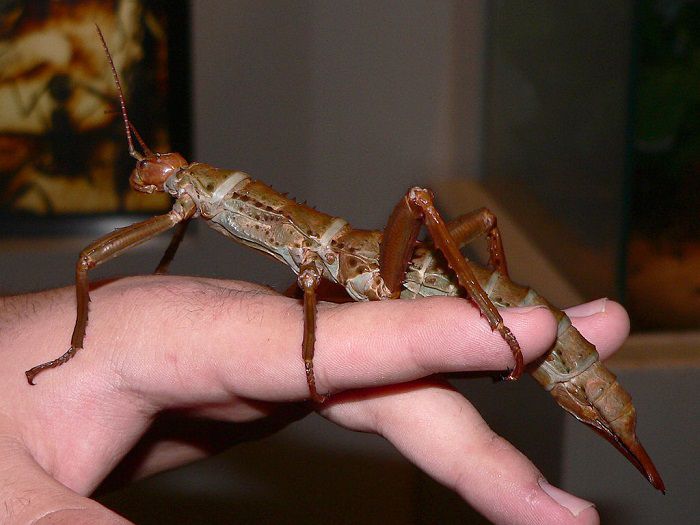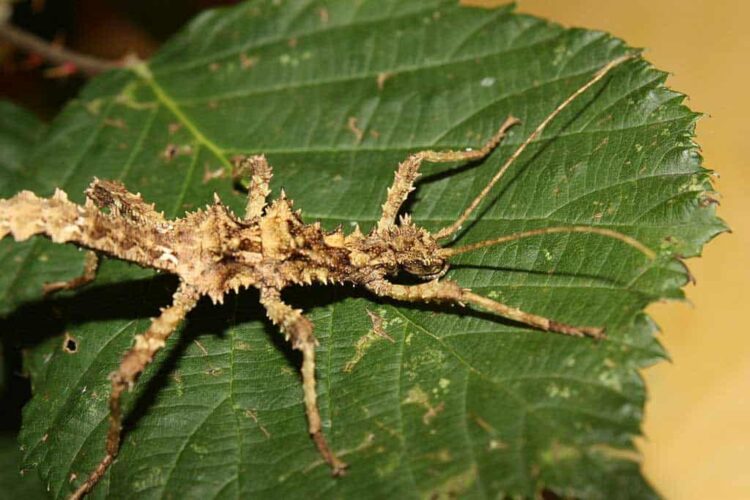Table of Contents
Can stick insects eat each other? It is a reasonable question given that the natural world is replete with examples of one kind of animal preying on another. We even have a name for those animals that eat others. We call them the carnivores. If you are not a big fan of carnivorous behaviour and you keep stick insects as pets , you can relax.
, you can relax.
Stick insects are herbivores; they only eat plant life. Herbivores have genetic instructions programmed into their DNA that prevent them from eating other animals. So even if an herbivore was starving to death, it would never attack and eat something that isn’t plant life.
You don’t have to worry about multiple stick insects in the same enclosure going after one another at meal time.
Having said that, do not assume stick insects will not attack one another. As I have pointed out in other posts on my site, there are occasions when even the most docile stick insect will take an offensive position . Attacks can be provoked when one stick insect invades another’s territory. Sometimes attacks are provoked by females trying to protect their eggs against male intruders.
. Attacks can be provoked when one stick insect invades another’s territory. Sometimes attacks are provoked by females trying to protect their eggs against male intruders.
For more advice and information on keeping and looking after stick insects, check out my ebook on Amazon click here
(opens in a new tab).

More About Herbivores
It may be enough for you to know that stick insects will not eat each other. But if you would like to know more about why, brush up on your knowledge of herbivores. As previously mentioned, herbivores are creatures whose diet consists of plant life. But this is more than just a personal preference.
An herbivore displays certain characteristics that would prevent it from eating flesh even if it wanted to. For example, most herbivores do not have the right anatomic features to allow them to be carnivorous. The various parts that make up the digestive tract are good example.
We humans have a range of tools that make it easy for us to chew meat, swallow it, and digest it. An herbivore is lacking the same tools. They do not physically have the capacity to consume and digest meat. Their bodies are designed in such a way as to only tolerate plant food.
Herbivores are also not physiologically suited to carnivorous activity. Their bodies have been designed in such a way as to utilize the nutritional value found in plant life. As such, they would not get the nutrition they need from animal flesh. Even if they had the anatomic features to chew, swallow, and digest meat, they would not obtain enough nutritional benefit from it to stay alive.
Herbivores and the Food Chain
Stick insects, like all herbivores, play an important role in the food chain. We know this based on a couple of important insights. First, herbivores are considered primary consumers . They are the first link in the chain, so to speak. They consume plant life in order to sustain themselves while at the same time processing the carbohydrates plants produce through photosynthesis.
. They are the first link in the chain, so to speak. They consume plant life in order to sustain themselves while at the same time processing the carbohydrates plants produce through photosynthesis.
The interesting thing about those carbohydrates is that herbivores do not need them in excess to survive. But carnivores do. And carnivores feed on herbivores as a regular part of their diets. That is where they get many of their carbohydrates from. But the chain does not even end there. It extends to the omnivores.
Omnivores feed on both herbivores and carnivores. They derive their carbohydrates from all sorts of animals. Human beings are omnivorous as you know, and we derive nutritional value from all sorts of plants and animals.

Feeding Your Insect Herbivores
We have now come full circle on the question, can stick insects eat each other? No, they cannot. They are neither anatomically nor physiologically adapted to carnivorous activity. So as a caretaker, your job is to provide the kind of plant life your stick insects can thrive on.
Regular visitors to my website are familiar with the fact that stick insects love green leaves . I have used other posts to talk about feeding stick insects everything from privet to bramble and rose leaves. I have even discussed the leaves of apple trees as a food source. Check out the ‘Feeding’ category.
. I have used other posts to talk about feeding stick insects everything from privet to bramble and rose leaves. I have even discussed the leaves of apple trees as a food source. Check out the ‘Feeding’ category.
The general rule of thumb is that a stick insect can eat multiple types of green leaves. I cannot say ‘most’ or ‘all’ because there are thousands of stick insect species. Also know that certain exotic species are more limited in their diets than others. As for the non-exotic species, like the Indian stick insect for example, their diets tend to be more adaptable.
If you are ever concerned about what your stick insect can eat, know this: stick insects are very good at recognising plants that are toxic to them. They will not eat something that is naturally poisonous. So if you give your stick insect a new kind of leaf it has never had before, you can take comfort in the fact that the leaf will not be eaten if it is unsafe to that particular insect.
Can stick insects each other? No. You have nothing to worry about – at least in terms of diet – if you want to put more than one stick insect in the same enclosure.


